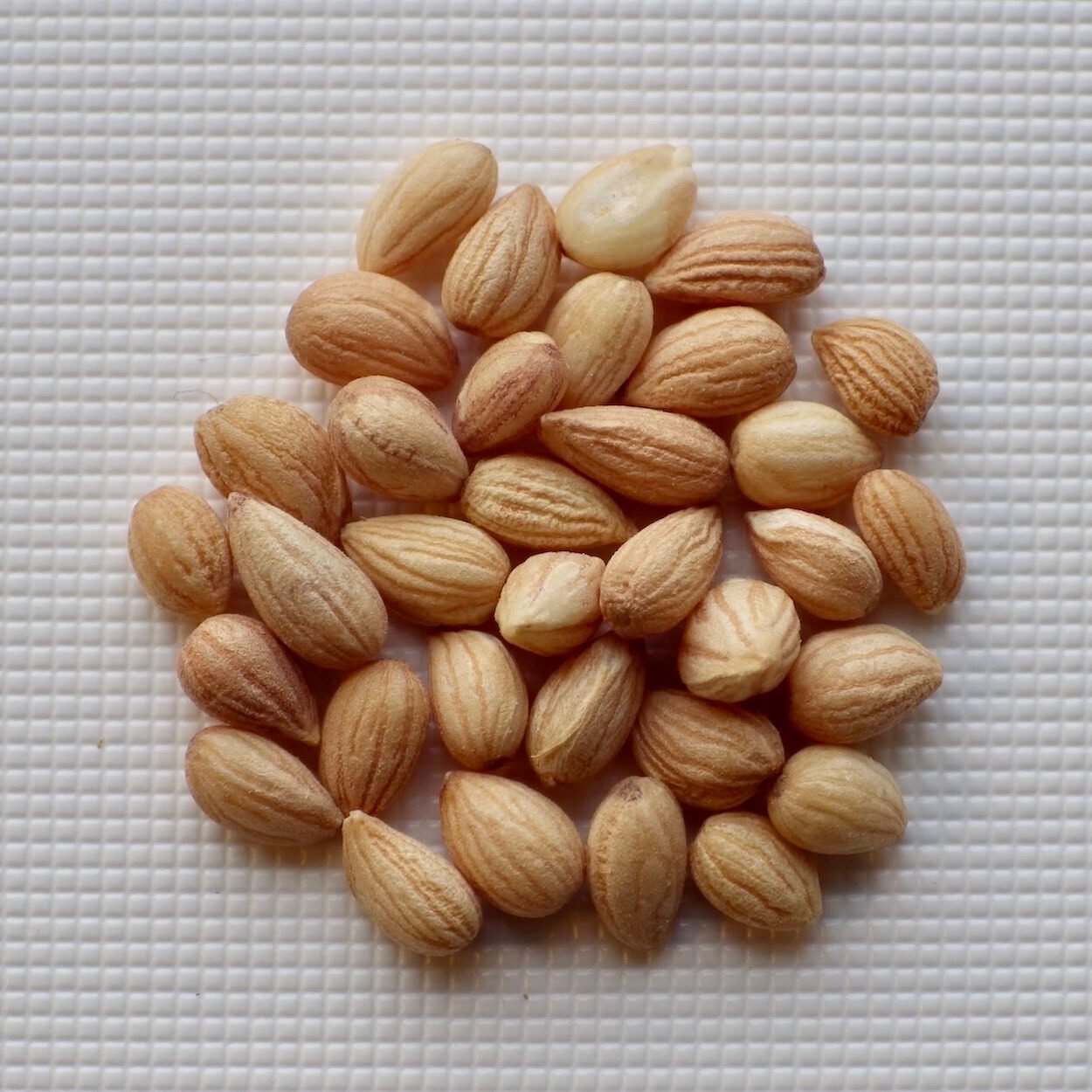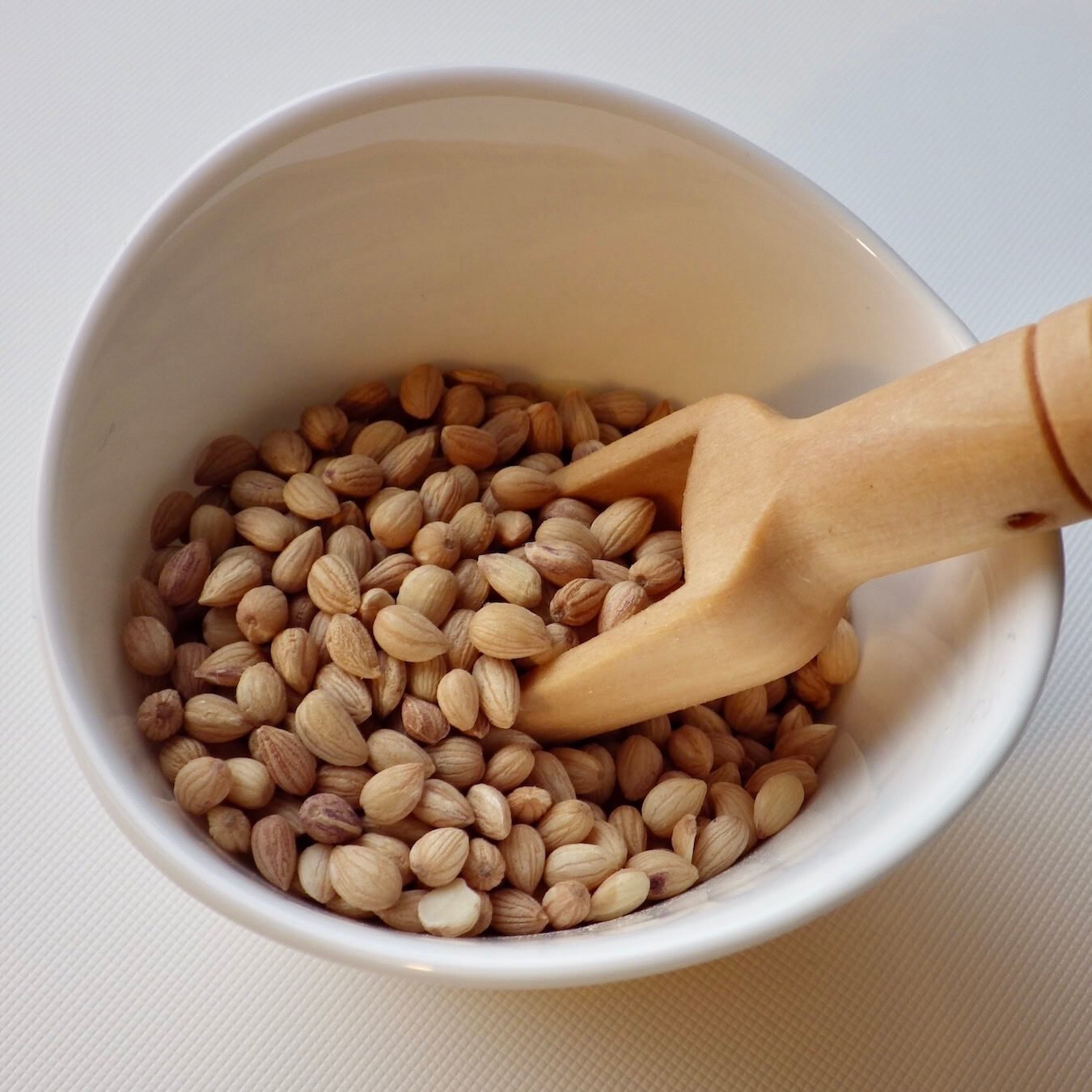Mahlab
Mahlab is the spice produced from the seed kernels within the cherry pits of the St. Lucie tree (Prunus mahaleb), a deciduous tree in the rose family.

REGION OF ORIGIN
Mahlab originated in the Mediterranean, including parts of Southern Europe, North Africa, and the Middle East. This diverse region is home to the wild ancestors of the Prunus mahaleb, and is where its initial domestication took place.
PART & COLOR
The cherry pits that house mahlab are brown and the teardrop-shaped seed kernels within are beige with slightly darker vertical grooves. Ground mahlab is pale yellow.
HARVEST
Prunus mahaleb typically flowers in the spring after its 4th year of growth, but it may not produce a significant amount of fruit until 5-7 years. The cherries mature and are harvested in late summer to early autumn. There is typically only one seed kernel inside each cherry pit, which is as hard as a rock when the cherries are freshly de-pitted. Each pit must be carefully dried until it is brittle enough to be cracked open. This drying step is critical as it allows the valuable kernels to be extracted without taking damage. The kernels are then further dried and cleaned.

FLAVOR & AROMA PROFILE
Mahlab's aroma is an intriguing blend of sweet, floral notes, akin to almonds and cherries with a slight hint of rose. It is comforting and elegant—evocative of marzipan, freshly baked pastries, and blooming spring gardens.
Mahlab’s flavor starts as a subtle bitterness but quickly turns into a gentle warmth. The lingering taste is nutty and floral, with hints of honey and delicate spice. Ground kernels offer a smooth, almost powdery texture that melts on the tongue, releasing their soft yet persistent aroma. Mahlab's complex flavor profile gives it flexibility. It can spice both sweet and savory dishes as well as beverages.
CULINARY USES
Mahlab is particularly cherished in Middle Eastern and Mediterranean cuisines, where its use dates back millennia. It's a beloved addition to pastries, cookies, and breads. In the famous Greek and Armenian Easter breads (tsoureki and choreg), its distinctive flavor is synonymous with celebration.
Mahlab’s subtle nuttiness also pairs exceptionally well with dairy, elevating the creaminess of milk puddings, custards, ice creams, and cheeses like the Syrian tresse. It can just as effortlessly complement the richness of meats, especially lamb, and many swear by sprinkling mahlab in their coffee or tea for a twist of sophistication.


